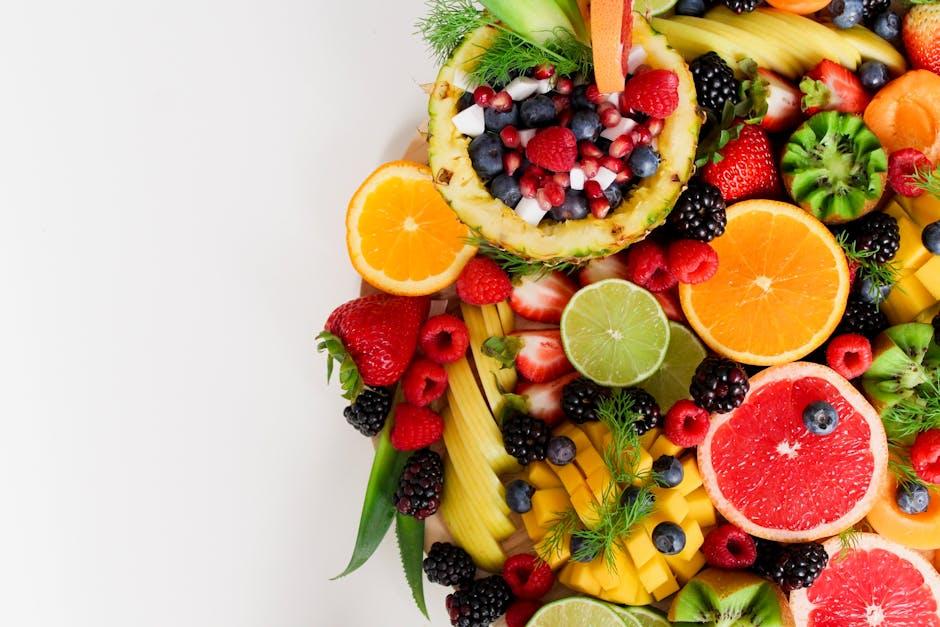Table of Contents
- Latest Trends in Kombucha Flavors and Ingredients
- Health Benefits of Kombucha Backed by Recent Studies
- Sustainable Brewing Practices in the Kombucha Industry
- Innovative Packaging Solutions for Kombucha Brands
- The Future of Kombucha: Predictions and Market Insights
- Q&A
- Key Takeaways


Latest Trends in Kombucha Flavors and Ingredients
Kombucha enthusiasts are witnessing an exciting evolution in flavor profiles and ingredient selections. The traditional approach, while beloved, is being complemented by an infusion of innovative ingredients that cater to diverse palates and dietary preferences. Here are some notable trends reshaping the kombucha landscape:
- Botanical Infusions: Floral and herbal notes are making waves. Ingredients like lavender, hibiscus, and elderflower are being incorporated to create refreshing blends that are as aromatic as they are flavorful.
- Functional Additives: Beyond taste, consumers are increasingly seeking health benefits from their beverages. Ingredients such as adaptogenic herbs (like ashwagandha and reishi) and superfoods (like spirulina and turmeric) are being added to promote wellness.
- Regional Flavors: Inspired by local ingredients, brands are harnessing the essence of their surroundings. Exotic fruits such as prickly pear, yuzu, and passionfruit are paired with traditional flavors for a unique twist.
Experimentation is crucial in the world of kombucha. As craft brewers continue to push boundaries, limited-edition seasonal flavors often capture interest. The use of cold brews and unconventional bases—such as matcha or yerba mate—enhances the depth and complexity of the beverage. Here’s a snapshot of some trending flavor combinations:
| Flavor Combination | Description |
|---|---|
| Ginger Turmeric Lemonade | A zesty mix that promotes digestion and boosts immunity. |
| Blackberry Sage | Sweet and herbaceous, offering a sophisticated taste experience. |
| Pineapple Jalapeño | A spicy tropical fusion that ignites the palate. |
As more consumers become educated about the health benefits and flavor potentials of kombucha, the types of flavors and unique ingredients available are expanding dramatically. The focus on sustainability and sourcing ethically is influencing trends as well, with a spotlight on local, organic ingredients. This marriage of flavors and conscious consumerism is not just satisfying tastebuds but also fostering a vibrant community around this fermented favorite.


Health Benefits of Kombucha Backed by Recent Studies
Kombucha, a fermented tea packed with probiotics, has gained increasing attention in recent years due to its potential health benefits, as highlighted by various studies. Rich in antioxidants, kombucha may help combat oxidative stress in the body. Research indicates that the polyphenols found in tea combined with the fermentation process lead to a drink that can reduce the risk of chronic diseases, such as heart disease and certain cancers. These findings encourage enthusiasts and newcomers alike to explore the unique possibilities of this effervescent beverage.
Another remarkable aspect of kombucha is its ability to promote digestive health. Studies have shown that the probiotics produced during fermentation can enhance gut flora, leading to improved digestion and nutrient absorption. Key benefits include:
- Reduction in bloating and gas
- Improved regularity
- Enhanced immune function
Recent research has also suggested that kombucha may positively influence mental health due to its impact on the gut-brain axis. A well-balanced gut microbiome is linked to a lower risk of anxiety and depression. For instance
| Study Focus | Key Findings |
|---|---|
| Gut Microbiome & Mood | Probiotics can enhance mood regulation. |
| Antioxidants in Kombucha | May lower anxiety by fighting oxidative stress. |
Sustainable Brewing Practices in the Kombucha Industry
In the evolving landscape of the beverage industry, sustainability has emerged as a focal point for kombucha brewers. As consumers increasingly prioritize eco-friendly products, many companies are adopting practices that not only enhance the quality of their kombucha but also minimize their environmental impact. From sourcing organic ingredients to implementing renewable energy solutions, the pursuit of sustainability is deeply woven into the fabric of modern kombucha production.
One of the most significant shifts in the industry is the emphasis on local sourcing. By collaborating with nearby farms and producers, brewers can reduce transportation emissions while ensuring that their raw materials are fresh and of high quality. This approach not only supports local economies but also provides kombucha enthusiasts with a product that maintains its unique flavor profile, reflecting the terroir of the region. Some innovative brewers are even experimenting with seasonal ingredients, which encourages a diverse range of flavors throughout the year.
Additionally, the industry is seeing an increase in water conservation efforts. Water usage is a critical concern in brewing, and many kombucha makers are adopting more efficient processes to reduce waste. This includes recycling water within their brewing systems and exploring innovative techniques like rainwater harvesting. Many brands are voluntarily committing to stringent sustainability practices, often transcending industry regulations, to create a culture of eco-consciousness that resonates with consumers keen on making informed choices.


Innovative Packaging Solutions for Kombucha Brands
As the demand for Kombucha continues to rise, brands are seeking ways to stand out in a crowded marketplace. Innovative packaging solutions not only enhance product visibility but also communicate brand values and sustainability. One major trend is the use of eco-friendly materials, which resonate with health-conscious consumers who prioritize environmental impact. Brands are experimenting with materials like compostable films, recycled paperboard, and glass, which not only reduce waste but also elevate the perceived quality of the beverage.
Additionally, interactive and engaging packaging designs are becoming a focal point for Kombucha brands. The implementation of QR codes and augmented reality features allows consumers to interact with the product in exciting ways. For instance, consumers can scan codes to access recipes, learn about the fermentation process, or even engage in brand loyalty programs. Innovative labeling techniques, such as thermochromic inks that change color with temperature, can catch the eye while offering customers vital information at a glance.
Moreover, form and functionality are key considerations. Many brands are opting for tap systems or refillable bottles that promote sustainable practices and encourage repeat purchases. The table below highlights some popular packaging trends that are reshaping the Kombucha landscape:
| Packaging Trend | Description | Consumer Benefit |
|---|---|---|
| Eco-friendly Materials | Use of biodegradable and recyclable materials | Reduces environmental impact |
| Interactive Features | QR codes and AR for brand engagement | Enhances consumer experience |
| Refillable Bottles | Sustainable tap systems for ongoing purchases | Promotes sustainability and loyalty |


The Future of Kombucha: Predictions and Market Insights
The market for this effervescent drink is poised for significant growth as consumer interest shifts towards health-oriented beverages. Probiotic-rich options are gaining traction, reflecting a broader trend of prioritizing gut health and immune support. With a more health-conscious society, kombucha attracts not only dedicated enthusiasts but also newcomers curious about its benefits. Producers are exploring innovative flavors and brewing techniques, further enhancing the category’s appeal. In fact, the global kombucha market is estimated to reach $2.5 billion by 2028, emphasizing its expanding influence in the beverage landscape.
A noteworthy trend is the rise of functional kombuchas infused with added nutritional benefits. Varieties enriched with adaptogens, vitamins, and herbal extracts are gaining popularity, catering to those seeking holistic wellness solutions. This trend highlights how manufacturers are responding to consumer demands for products that offer more than just refreshment. As kombucha becomes synonymous with a lifestyle choice for many, the possibilities for customization are endless, making it an exciting venture for brands looking to differentiate themselves.
Additionally, sustainability is shaping the future of kombucha production. As environmental concerns grow, customers are increasingly favoring brands that prioritize eco-friendly practices. Many breweries are now adopting sustainable packaging, implementing energy-efficient processes, and sourcing organic ingredients. A commitment to sustainability not only resonates with eco-conscious consumers but also solidifies a brand’s reputation. Companies that align their practices with consumer values are likely to thrive in this evolving marketplace.
